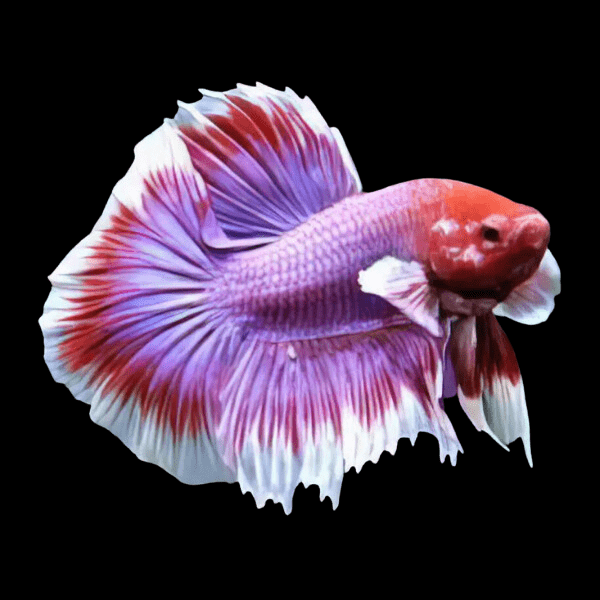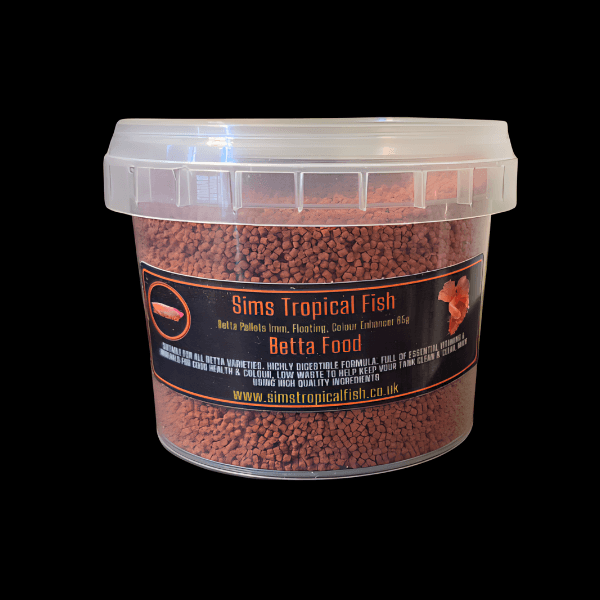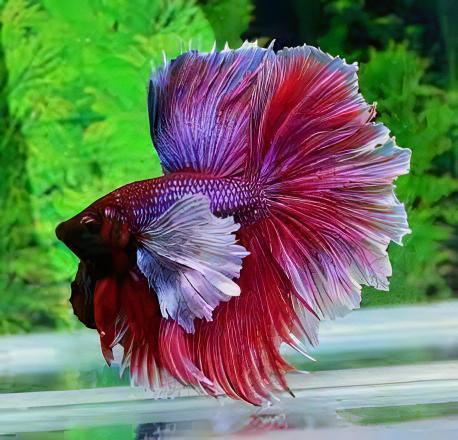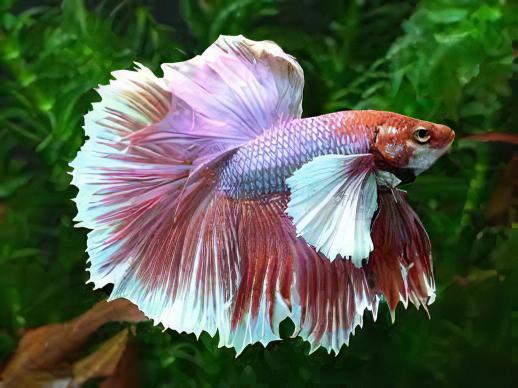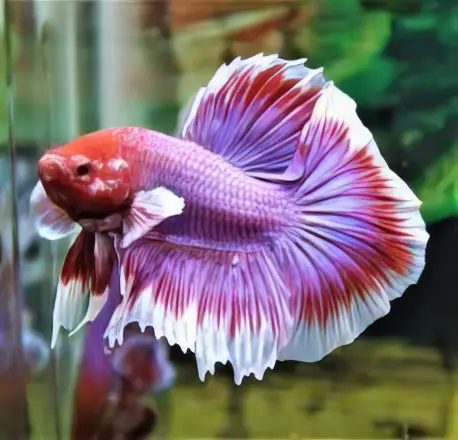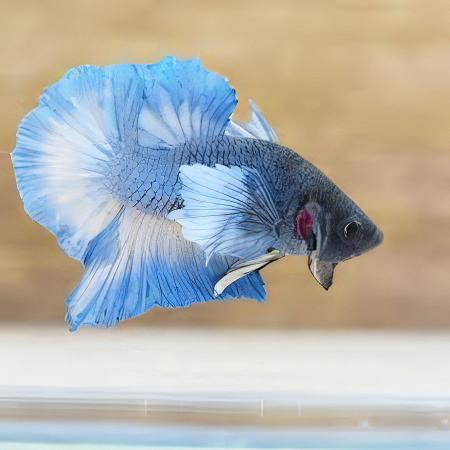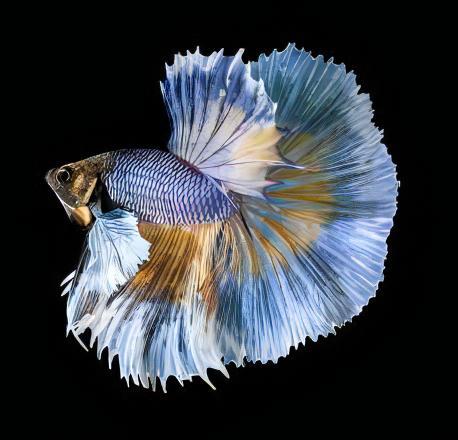Description
Male Betta Dumbo
Elephant Ear Bettas, also known as Dumbo Bettas or Dumbo Betta fish, are one of the most unique and interesting betta fish species out there. Their long, flowing fins and large, rounded heads give them an appearance that makes them stand out from other bettas (and even other types of fish!).
They’re not particularly difficult to care for, but there are a few key considerations you should take into account if you’re thinking about setting up your very own Betta tank!
If you’re looking to add some fun and personality to your fish tank with an unusual variety of betta, the Elephant Ear Betta (also known as Dumbo Betta fish) may be just what you’re looking for. This unique variety of betta has oversize fins, creating an appearance that evokes the image of its namesake!
And while they aren’t difficult to care for, they do require special attention due to their size and shape.
An important part of caring for your pet betta fish is making sure they have the right tank and accommodations to live in, ensuring they’re safe and healthy at all times.
This Elephant Ear Betta ‘Dumbo Betta’ care guide will teach you everything you need to know about this cool betta fish breed, including their history, what kinds of aquariums are suitable for them, and how to take care of them, and more!
Origin and descriptions
The elephant ear betta is one of three common types of betta with fins so large they look like, well, elephant ears. But what you might not know is that it’s actually called a dumbo betta. This variety was developed in Thailand and you can see why dumbo has just got to be a reference to Disney’s most famous elephant-eared character!
This fish is native to the waters of the Mekong Delta, Vietnam, and Thailand on the East Coast of Asia. This region mainly consists of floodplains, canals, and rice paddy areas.
The aggressive disposition of this fish led to its finding in the aquarium. King Rama III of Malaysia was inspired by the fighting spirit of the fish. A man received a few of the fish after he made a collection of them. They were later given to a medical scientist named Theodore by the same man. Over the years, the fighting fish became known as Betta Splendens.
Currently, Elephant ear bettas are listed as vulnerable fish by the IUCN. Many of the animals’ habitats have been damaged by pollution, and others have been cleared to make way for construction.
The elephant ear betta fish is one of five closely related species originating from Southeast Asia. This betta variant is also known as Dumbo betta fish or elephant ear fish because of its unique physical appearance.
The dumbo betta belongs to the family Gouramis (Osphronemidae) and is known for its large ears. These fish are commonly referred to as elephant ear bettas due to their large head growths, which resemble an elephant’s ears. They can grow up to 3 inches in length and live up to 4 years with proper care.
Elephant ear bettas are peaceful community fish and do well when kept with other non-aggressive species of similar size such as tetras, rasboras, rainbowfish, dwarf cichlids, and angelfish.
Scientific name
The scientific name of the elephant ear betta “dumbo betta” is betta splendens
Habitat
Elephant ear bettas prefer a large body of water in which to swim around. This is important because they are prone to developing fin rot if their fins do not have enough room to dry out. A recommended tank size is 10 gallons for one fish, but you may need to increase that for two or more elephant ears.
If you plan on keeping your elephant ear in a smaller container than 10 gallons, then be sure to change its water often (at least once per week). Bettas can live in smaller containers, but it will require more work on your part. The ideal temperature range for an elephant ear betta is between 78 and 82 degrees Fahrenheit.
In order to maintain these temperatures, keep your aquarium away from drafts and heat sources such as vents or direct sunlight. It’s also important to avoid putting them near cold windows during the winter months. Some owners find success with placing their tanks under black lights; however, there is no scientific evidence showing whether or not black lights affect betta health in any way.
Elephant ear betta fish also enjoy hiding places like caves made from rocks and driftwood.
Elephant ear betta male
The Elephant ear betta male fish are extremely aggressive, so you cannot keep more than one in a single tank.
Also, they tend to be slightly larger than females, although this difference contributes only a little over an inch to the overall size
Elephant ear betta female
You can have multiple Elephant ear betta female fish in the same tank, and there are certainly other fish that you can keep around if you have an Elephant Ear Betta with a milder temperament. They tend to be a little bit smaller than their male counterparts.
Size
The elephant ear betta is a small fish, growing to about 2.5 inches (6.4 cm) in length.
Tank size
Although these fish species can be housed in a tank as small as 5 or 10 gallons, but due to their nature, the minimum recommended tank size is 20 gallons (76 liters).
Tank requirements
The Dumbo Betta does best in an aquarium with a capacity of 5 gallons or more. Bigger (like 10 gallons or more) are better with these guys, as long as you can find an appropriately sized tank for them. I would stay away from tiny tanks, however, because many Bettas won’t be able to swim well in small spaces.
You can also use a larger tank as a multi-species setup—mix and match other fish species to keep your pet entertained! Just make sure you have enough room for all of them. If you don’t want to mix species, then at least add some plants and decorations that will provide plenty of hiding places. Bettas are very shy by nature, so they need places where they can hide if they feel threatened by another fish or human interaction. These may include caves, driftwood, rocks, and even artificial plastic plants.
When it comes to filtration, you’ll want something basic like a sponge filter or power filter. These will do a good job keeping water clean while providing ample oxygenation for your fish to breathe. And remember: when choosing filters, bigger is always better; just make sure there is enough space around it so that your betta doesn’t get sucked into it!
Tank mates
Some good tank mates for your dumbo betta fish are Goldfish, Shubunkins, or Black Moors. Be careful not to add a fish that’s too aggressive though! Stay away from breeds like Angelfish, Cichlids, etc.
You can also add fish like pygmy Corydoras, Ember Tetra, Harlequin Rasboras, and female Bettas.
Breeding
It may seem that just putting a female and a male Betta in the same tank will breed them, but you’ll likely be disappointed. Due to the fragility of the babies, it is best to have a separate breeding tank without any substrate.
In order to take care of the nest, you will need the male Elephant Ear Betta around. In order to prevent the male from eating the babies, you will need to remove him as soon as the fry are free to swim.
Additionally, once you get your new Betta fish large enough, you’ll have to rehome them or separate them. Finding new owners is the best way to accomplish this.
While it’s not difficult to breed this fish, there is a small learning curve involved in getting it right.
Are they aggressive or peaceful?
The elephant dumbo betta fish are highly aggressive and territorial fish, so care should be taken when housing them with more docile and peaceful fish.
Dumbo betta care
The Elephant ear betta has very specific needs and care requirements. This means it can be difficult to find a reliable source of information online. Even experienced betta keepers run into problems when keeping these fancy fish because they’re so rare and complicated.
Since bettas are tropical fish, they prefer a tank temperature of around 25°C (77°F) with water high in oxygen. This translates to tap water that is at least 22°C (72°F). An aquarium heater should be used to raise the temperature if necessary. Temperatures below 22°C (72°F) are too cold for your pet, and will eventually lead to death
This means that bettas enjoy having an environment with a temperature between 75°F and 86°F. This warmth will also help keep their metabolism running.
This is one of those things that are as simple as it sounds. Give them what they want and let them go at it! Bettas are tropical fish, so they’re native to warm water.
What they eat
Floating pellet and flake. They love sinking their teeth into meaty foods like bloodworms, brine shrimp, and daphnia as a treat
